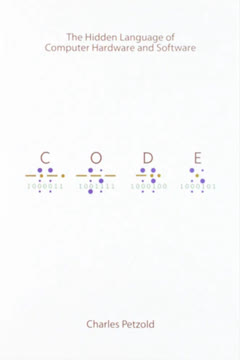Key Takeaways
1. Early exposure to computers shapes future programmers
I taught myself Fortran over Thanksgiving weekend-so it was a long weekend-of 1968. After that I was completely hooked.
Childhood fascination: Guy Steele's early interest in science, math, and computers laid the foundation for his future career. His exposure to an IBM 1130 minicomputer in high school sparked a lifelong passion for programming. This early experience demonstrates how access to technology at a young age can significantly influence career paths.
Self-directed learning: Steele's self-taught approach to programming languages, starting with Fortran, showcases the importance of initiative and self-motivation in developing programming skills. His rapid absorption of programming concepts over a single weekend highlights the potential for quick learning when passion and opportunity align.
- Key factors in early programming exposure:
- Access to computers (school, libraries, home)
- Supportive teachers and mentors
- Self-directed learning materials (books, manuals)
- Curiosity and willingness to experiment
2. Learning multiple languages expands programming perspective
COBOL, Fortran, IBM 1130 assembly, PDP-1 0 machine language, APL, C, C++, Bliss, GNAL, Common Lisp, Scheme, Maclisp, S-I Lisp, Lisp, C, Java, JavaScript, Tcl, Haskell, FOCAL, BASIC, TECO, and TeX. "Those would be the main ones, I guess," he added.
Polyglot programming: Steele's extensive list of programming languages demonstrates the value of versatility in a programmer's toolkit. Each language offers unique paradigms and approaches to problem-solving, broadening a programmer's perspective and ability to tackle diverse challenges.
Adaptability and growth: By learning multiple languages, programmers develop the ability to choose the best tool for each task and adapt to new technologies more easily. This linguistic diversity also fosters a deeper understanding of programming concepts and paradigms, enabling programmers to see problems from different angles.
- Benefits of learning multiple programming languages:
- Enhanced problem-solving skills
- Improved adaptability to new technologies
- Deeper understanding of programming concepts
- Ability to choose optimal tools for specific tasks
- Increased employability and career opportunities
3. Mentorship and educational opportunities fuel growth
At Latin School I'd primarily have to credit the math teachers with encouraging me just the right amount.
Supportive educators: Steele's experience with encouraging math teachers at Boston Latin School highlights the crucial role that mentors play in nurturing young talent. His teachers recognized his potential and provided him with opportunities to explore computing, demonstrating how targeted support can accelerate learning and passion.
Access to resources: The story of Steele's access to IBM and DEC offices, where he could obtain reference manuals and interact with professionals, underscores the importance of having access to industry resources. These experiences provided real-world context and deepened his understanding of computing beyond what was available in the classroom.
- Key elements of effective mentorship in programming:
- Recognizing and nurturing individual talent
- Providing access to resources and equipment
- Encouraging self-directed learning
- Offering challenging opportunities
- Connecting students with industry professionals
4. Balancing formal education with hands-on experience
By the time I was applying to colleges I applied to MIT, Harvard, and Princeton and really wanted to go to MIT. I got accepted at all three.
Academic foundations: Steele's journey through top-tier universities like Harvard and MIT provided him with a strong theoretical foundation in computer science and mathematics. This formal education offered structured learning and exposure to advanced concepts that complemented his practical experience.
Practical application: Simultaneously working at MIT while studying at Harvard allowed Steele to apply theoretical knowledge to real-world projects immediately. This dual approach of academic study and practical work experience created a powerful learning synergy, enabling him to understand both the theoretical underpinnings and practical applications of computer science.
- Benefits of combining formal education and hands-on experience:
- Immediate application of theoretical concepts
- Exposure to real-world problems and solutions
- Development of both academic and practical skills
- Building a professional network while studying
- Enhanced understanding through diverse perspectives
5. The importance of understanding computer architecture
It turns out that T. Vincent Learson had arranged for an IBM 1130 minicomputer to be in the basement of the Boston Latin School.
Hardware knowledge: Steele's early exposure to different computer architectures, from the IBM 1130 to DEC PDP-10s, provided him with a deep understanding of how computers work at a low level. This knowledge of hardware architecture is crucial for writing efficient code and understanding system limitations.
Low-level programming: His experience with assembly language and machine code for various systems gave Steele insights into memory management, instruction sets, and system optimization. This low-level understanding is valuable even when working with high-level languages, as it informs decisions about performance and resource utilization.
- Importance of understanding computer architecture:
- Ability to write more efficient code
- Better debugging skills for low-level issues
- Insight into performance optimization
- Understanding of hardware limitations and capabilities
- Facilitation of cross-platform development
6. Adapting to technological advancements in programming
Looking back I think I was the fortunate beneficiary of a number of interesting coincidences or blessings.
Technological evolution: Steele's career spans significant advancements in computing technology, from early mainframes to modern high-performance systems. His ability to adapt to these changes demonstrates the importance of flexibility and continuous learning in the field of programming.
Embracing change: Throughout his career, Steele has worked on various projects and languages, showing an ability to embrace new technologies and paradigms. This adaptability is crucial in a field where rapid technological change is the norm, and programmers must constantly update their skills to remain relevant.
- Strategies for adapting to technological advancements:
- Continuous learning and skill updating
- Staying informed about industry trends
- Experimenting with new languages and tools
- Participating in open-source projects
- Attending conferences and workshops
7. The value of persistence and self-teaching in programming
I remember being fascinated by science and math and I read books such as Irving Adler's House of Numbers; it was one of my favorites.
Self-motivation: Steele's early fascination with science and math books demonstrates the importance of self-motivated learning in programming. His initiative to seek out and absorb information independently laid the groundwork for a successful career in computer science.
Overcoming challenges: The story of Steele implementing his own Lisp for the IBM 1130 during his senior year of high school showcases the value of persistence in tackling complex programming challenges. This self-directed project likely provided invaluable learning experiences and problem-solving skills.
- Key aspects of self-teaching in programming:
- Cultivating curiosity and a love for learning
- Setting challenging personal projects
- Utilizing available resources (books, online courses, documentation)
- Practicing regularly and consistently
- Seeking out and solving real-world problems
8. Interdisciplinary knowledge enhances programming skills
I set out to be a pure math major and arranged my courses appropriately and then discovered that I had no intuition whatsoever for infinite dimensional Banach spaces.
Breadth of knowledge: Steele's background in mathematics and his exploration of various scientific fields contributed to his success in programming. This interdisciplinary approach provided him with diverse problem-solving techniques and a broader perspective on computational challenges.
Adaptability in learning: His experience of switching from pure mathematics to applied math and computer science demonstrates the importance of being open to changing directions based on personal strengths and interests. This flexibility allowed him to find the field where his skills were best utilized.
- Benefits of interdisciplinary knowledge in programming:
- Enhanced problem-solving abilities
- Ability to approach challenges from multiple perspectives
- Improved communication with experts in other fields
- Potential for innovative solutions through cross-disciplinary thinking
- Versatility in tackling diverse programming projects
9. The evolution of programming languages and paradigms
Having access to MIT as a high schooler was another relatively unusual thing. And to be allowed to play with million-dollar computers when I was 15, back when a million dollars was real money.
Language diversity: Steele's experience with a wide range of programming languages, from early assembly to modern high-level languages, reflects the rapid evolution of programming paradigms. This evolution has led to more powerful and expressive ways of solving computational problems.
Paradigm shifts: His involvement in the development of Lisp dialects and work on various language standards demonstrates the ongoing evolution of programming paradigms. Understanding this evolution helps programmers appreciate the strengths and weaknesses of different approaches and make informed decisions about which tools to use for specific tasks.
- Key developments in programming language evolution:
- Shift from low-level to high-level languages
- Development of object-oriented programming
- Rise of functional programming paradigms
- Creation of domain-specific languages
- Integration of features from multiple paradigms in modern languages
10. The role of curiosity and experimentation in programming careers
I had spent my senior year implementing my own Lisp for the IBM 1130.
Exploratory mindset: Steele's initiative to implement his own Lisp interpreter demonstrates the importance of curiosity and experimentation in programming. This project, undertaken out of personal interest, likely provided deep insights into language design and implementation.
Learning through doing: The hands-on experience of creating a programming language implementation exemplifies the value of practical projects in learning. Such endeavors often lead to a more profound understanding of programming concepts and can open up new career opportunities.
- Ways to cultivate curiosity and experimentation in programming:
- Undertaking personal coding projects
- Exploring new programming languages and paradigms
- Participating in coding challenges and hackathons
- Contributing to open-source projects
- Reimplementing existing tools to understand their inner workings
Last updated:
FAQ
What's Coders at Work about?
- Interviews with programmers: Coders at Work by Peter Seibel features interviews with fifteen influential programmers, offering insights into their experiences and philosophies.
- Programming as a craft: The book delves into programming as a craft, exploring how these experts approach coding, design, and problem-solving.
- Historical and diverse perspectives: It provides historical context and diverse viewpoints, from early pioneers to modern developers, on the evolution of programming languages and practices.
Why should I read Coders at Work?
- Learn from experts: The book offers valuable insights from some of the most respected figures in programming, which can inform and inspire your own practices.
- Diverse perspectives: It presents a range of viewpoints on programming, broadening your understanding of different approaches and methodologies.
- Inspiration and motivation: The stories and experiences shared can motivate you to pursue your own programming projects and challenges with renewed enthusiasm.
What are the key takeaways of Coders at Work?
- Readability is crucial: Many interviewees stress the importance of writing clear and readable code for maintenance and collaboration.
- Continuous learning: Programming is an ever-evolving field, and even experienced programmers are always seeking better ways to write software.
- Collaboration and communication: Effective teamwork and communication are essential for successful software development and project outcomes.
What are the best quotes from Coders at Work and what do they mean?
- "Programs are meant to be read.": This quote emphasizes that code should be understandable to humans, not just machines, enhancing collaboration and reducing errors.
- "You can't prove by testing that a program is bug-free.": It highlights the limitations of testing and the need for rigorous design to ensure reliability.
- "The best way to learn programming is to write a lot of programs.": This underscores the importance of hands-on experience in mastering programming skills.
How did the interviewees in Coders at Work learn to program?
- Early exposure: Many started programming at a young age, often through school projects or personal interest, laying the foundation for their skills.
- Self-taught methods: Several learned through trial and error, reading manuals, and experimenting with code, highlighting the importance of hands-on experience.
- Mentorship and collaboration: The influence of mentors and collaboration with peers played a significant role in their development, as shared by many interviewees.
What programming languages and tools do the interviewees in Coders at Work prefer?
- Diverse language preferences: Interviewees express preferences for various languages, with many favoring Perl, C, and JavaScript for their flexibility and power.
- Tools for efficiency: Tools like Emacs and JSLint are mentioned as favorites for their utility in writing and debugging code.
- Evolution of language use: The book illustrates how programmers adapt to new languages and tools over time, reflecting the dynamic nature of the programming landscape.
What debugging techniques are discussed in Coders at Work?
- Print statement debugging: Many interviewees mention using print statements to track down issues, emphasizing its simplicity and effectiveness.
- Systematic approach: Some discuss a systematic method of debugging by narrowing down the location of errors through a process of elimination.
- Using assertions: Several programmers advocate for the use of assertions to catch errors early in the development process, ensuring code reliability.
How do the interviewees in Coders at Work approach code design?
- Prototyping and iteration: Many emphasize the importance of prototyping and iterating on designs, allowing for flexibility and adaptation as new insights are gained.
- Documentation importance: Writing documentation alongside code is highlighted to clarify intentions and ensure that the program's purpose is well understood.
- Focus on simplicity: A common theme is the preference for simplicity in design, advocating for clear, understandable code that avoids unnecessary complexity.
What role does intuition play in programming, according to Coders at Work?
- Guiding decision-making: Intuition can guide decision-making and problem-solving, as many interviewees suggest.
- Experience-based insights: Intuition often develops through experience, allowing programmers to recognize patterns and make informed choices.
- Balancing intuition and analysis: While intuition is valuable, analytical thinking and rigorous design are also necessary for robust software solutions.
How do the interviewees in Coders at Work view the future of programming?
- Evolving landscape: Many express optimism about advancements in technology and methodologies, believing programming will continue to evolve.
- Need for better tools: There is an emphasis on developing better tools and languages to improve the programming experience.
- Collaboration and community: The future is seen as increasingly collaborative, with a focus on sharing knowledge and resources.
What is the significance of functional programming in Coders at Work?
- Functional programming benefits: Advantages include easier reasoning about code and improved modularity, as discussed by several interviewees.
- Laziness as a feature: Lazy evaluation is highlighted as a powerful tool, allowing for more efficient use of resources.
- Integration with other paradigms: Functional programming can coexist with other paradigms, providing a richer toolkit for developers.
What advice do the interviewees in Coders at Work give to aspiring programmers?
- Embrace curiosity and experimentation: Aspiring programmers are encouraged to be curious, experiment with different languages and tools, and not fear mistakes.
- Focus on readability and documentation: Writing readable code and documenting it well is crucial for collaboration and future maintenance.
- Learn from others: Reading code written by others, participating in open-source projects, and seeking mentorship are advised to enhance skills and knowledge.
Review Summary
Coders at Work is highly regarded for its insightful interviews with programming luminaries. Readers appreciate the historical perspective, diverse opinions, and practical advice offered. Many find it inspiring and educational, praising the author's interviewing skills and the book's ability to capture the essence of programming as a craft. Some criticisms include repetitive questions and occasional dryness. Overall, it's considered a valuable read for programmers and those interested in computer science history, offering unique insights into the minds of influential coders.
Similar Books








Download PDF
Download EPUB
.epub digital book format is ideal for reading ebooks on phones, tablets, and e-readers.




